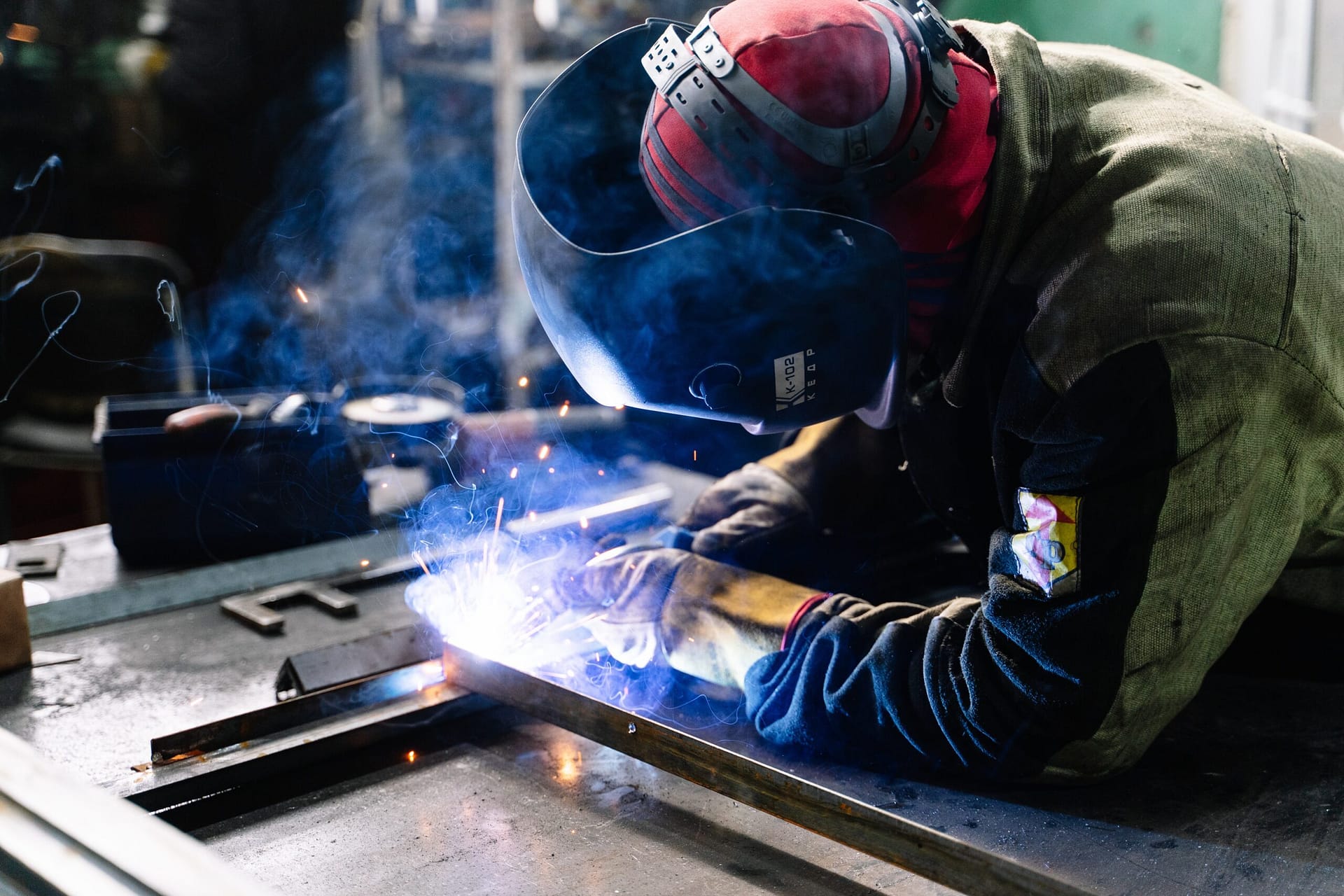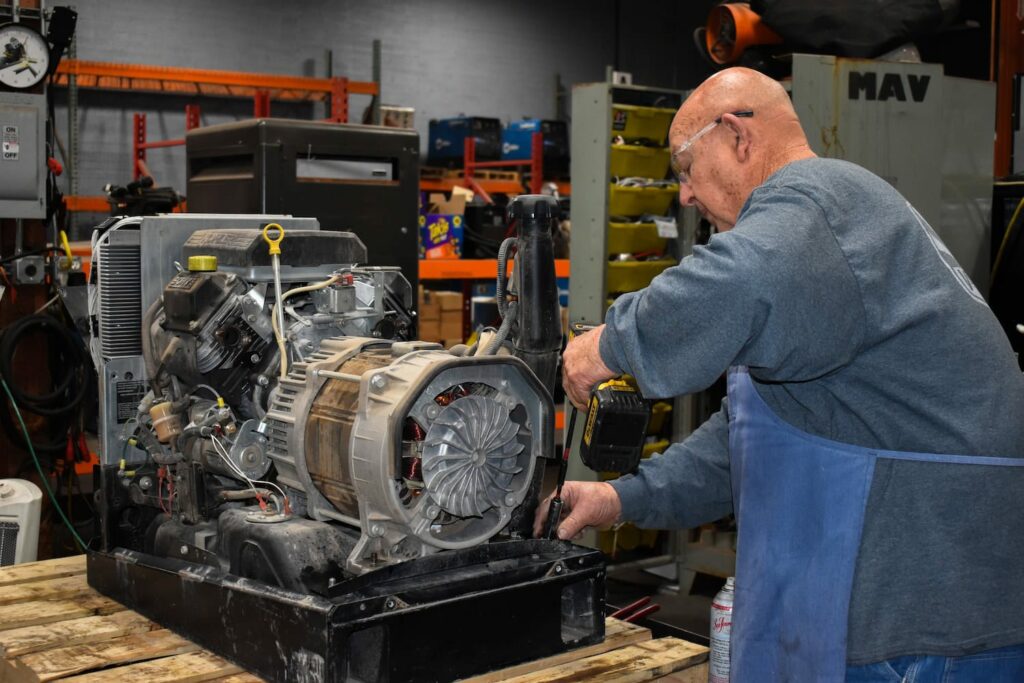Everything about Welding: Key Insights Into Techniques and Best Practices for Success
Welding encompasses a variety of techniques, each matched for details products and applications. Understanding these techniques, such as GMAW, SMAW, and TIG, is necessary for attaining suitable outcomes. Furthermore, the best tools and security methods can not be neglected. As prep work and fixing play crucial functions in the welding process, mastering these elements can substantially boost the top quality of the end product. What are the key elements that guarantee a successful weld?
Understanding Various Welding Techniques
Welding strategies incorporate a range of techniques, each fit to specific applications and materials. Among the most typical techniques are Gas Steel Arc Welding (GMAW), Protected Steel Arc Welding (SMAW), and Tungsten Inert Gas Welding (TIG) GMAW, also called MIG welding, is preferred for its speed and flexibility, making it perfect for thin materials. SMAW, or stick welding, is favored for its simpleness and performance in outside atmospheres, specifically with thicker metals. TIG welding supplies accuracy and control, making it appropriate for detailed work and non-ferrous metals (Montana Mobile Welding and Repair Welding). Each technique has its unique advantages and considerations, permitting welders to select the most effective method based upon the job's needs, product kind, and desired results. Recognizing these techniques is important for effective welding
Essential Welding Tools and Tools
While different welding methods require specific abilities, the best equipment and tools are equally crucial for achieving top quality results. Important welding tools includes welding equipments, which differ depending on the technique-- such as MIG, TIG, or stick welding. Safety equipment, consisting of headgears, handwear covers, and aprons, warranties safety and comfort throughout the procedure. Additionally, clamps and components aid safeguard materials in place, making certain precision in welds. Consumables like welding poles, cable, and protecting gas are likewise vital parts that affect the top quality of the weld. Tools such as mills and cutters facilitate surface prep work and post-weld ending up, contributing to an expert end result. Spending in top quality equipment ultimately boosts the efficiency and performance of welding jobs.
Safety Practices in Welding
Correct safety and security methods are important in the welding sector to shield workers from potential risks. Welders should use proper individual safety equipment (PPE), consisting of helmets with correct shading, handwear covers, and flame-resistant clothes. Sufficient ventilation is crucial to minimize direct exposure to unsafe fumes and gases generated during the welding process. Additionally, employees need to be educated in the right handling of welding devices to prevent crashes. Fire precaution, such as keeping combustible materials away from the welding location and having fire extinguishers conveniently offered, are required. Normal inspections of tools and offices can assist identify potential hazards before they lead to accidents. By sticking to these safety and security methods, welders can produce a much safer working setting and reduce threats related to their trade.
Readying Products for Welding
Preparing products for welding is an essential step that substantially influences the quality and honesty of the end product (Montana Mobile Welding and Repair Fabrication). Appropriate prep work entails cleaning the surfaces to eliminate contaminants such as dust, oil, and corrosion, which can compromise the weld. Strategies such as grinding, fining sand, or utilizing solvents are commonly employed to attain a clean surface area. In addition, guaranteeing that the products mesh comfortably is crucial; gaps can cause weak welds. It's likewise important to think about the alignment and positioning of the components, as this will influence the convenience of welding and the final end result. Lastly, picking the proper filler material and making sure compatibility with the base steels is crucial for achieving solid, resilient welds
Tips for Achieving High-Quality Welds
Attaining high-grade welds requires interest to information and adherence to ideal techniques throughout the welding process. Appropriate joint prep work is crucial, guaranteeing surfaces are clean and free from pollutants. Picking the proper filler product and welding technique based on the base steels is critical for suitable bonding. Keeping consistent travel speed and angle while welding can promote and stop flaws harmony. Additionally, managing warmth input is crucial; extreme warmth can result in bending and deteriorated joints. If essential, regularly examining the welds during the procedure permits for instant modifications. Ultimately, using appropriate post-weld therapies, such as cleansing and stress relief, can enhance the toughness and honesty of the weld, inevitably guaranteeing a successful outcome.
Troubleshooting Usual Welding Issues
Welding frequently presents difficulties that can affect the high quality and honesty of the end product. Common problems such as porosity, irregular weld grains, and getting too hot can occur, each requiring specific repairing strategies. Comprehending these issues is crucial for welders to improve their skills and attain excellent outcomes.
Porosity Issues Discussed
Porosity can frequently be overlooked, it remains an essential concern in welding that can compromise the honesty of a completed product. Porosity refers to the existence of small gas pockets within the weld bead, which can weaken the joint and lead to premature failing. This trouble generally emerges from contaminants, dampness, or improper protecting gas protection throughout the welding process. To minimize porosity, welders should validate that the base materials are dry and tidy, make use YOURURL.com of suitable shielding gases, and preserve constant welding specifications. Frequently checking the devices and atmosphere can likewise help determine possible issues prior to they materialize in the weld. Resolving porosity efficiently is essential for accomplishing strong, resilient welds that meet top quality standards.

Irregular Weld Beans
Irregular weld beads can substantially impact the top quality and toughness of a completed product. Different factors contribute to this concern, consisting of incorrect travel rate, incorrect amperage setups, and irregular electrode angles. When the welder relocates too rapidly, a grain might appear slim and do not have penetration, while relocating as well gradually can trigger excessive build-up. Additionally, making use of the wrong amperage can lead to either undercutting or extreme spatter, both of which compromise weld integrity. The welder's method, such as inconsistent lantern movement, can also result in irregular bead look. To reduce these issues, welders ought to concentrate on keeping consistent, controlled activities and making sure correct tools setups to achieve uniformity in their welds. Uniformity is vital to achieving strong and dependable welds.
Getting Too Hot and Warping Issues
Too much warmth throughout the welding procedure can cause substantial overheating and deforming problems, influencing the architectural honesty of the work surface. These troubles commonly manifest as distortion, which can jeopardize alignment and fit-up, making additional setting up challenging. Elements adding to overheating consist of the selection of welding criteria, such as voltage and travel rate, along with the type of material being bonded. To minimize these issues, welders need to maintain regular travel speed and suitable heat input while keeping an eye on the work surface temperature. Furthermore, preheating or post-weld warm treatment can help minimize stresses brought on by fast cooling - Fabrication. Normal examination and adherence to finest practices are crucial in preventing overheating and making certain the long life and reliability of bonded frameworks
Regularly Asked Concerns
What Are the Profession Opportunities in the Welding Market?
The welding sector provides diverse job possibilities, including settings as welders, designers, inspectors, and teachers. Specialists can work in manufacturing, building and construction, aerospace, and auto markets, gaining from strong demand and competitive wages in various functions.
Exactly How Can I Improve My Welding Speed Without Sacrificing Top Quality?
To boost welding rate without giving up high quality, one need to practice effective strategies, preserve equipment, optimize setups, and improve hand-eye control. Normal training and seeking comments can likewise substantially add to accomplishing faster, top quality welds.
What Qualifications Are Available for Welders?
Countless qualifications exist for welders, including those from the American Welding Society (AWS), the National Center for Building Education And Learning and Research (NCCER), and different industry-specific companies. These qualifications enhance employability and demonstrate skill efficiency.
Just How Does Welding Impact the Properties of Metals?
Welding affects the buildings of steels by changing amada weld tech their microstructure, which can cause adjustments in stamina, firmness, and ductility. Warm input and air conditioning rates during the procedure considerably impact these product qualities.
Can I Bonded Dissimilar Metals Together?
